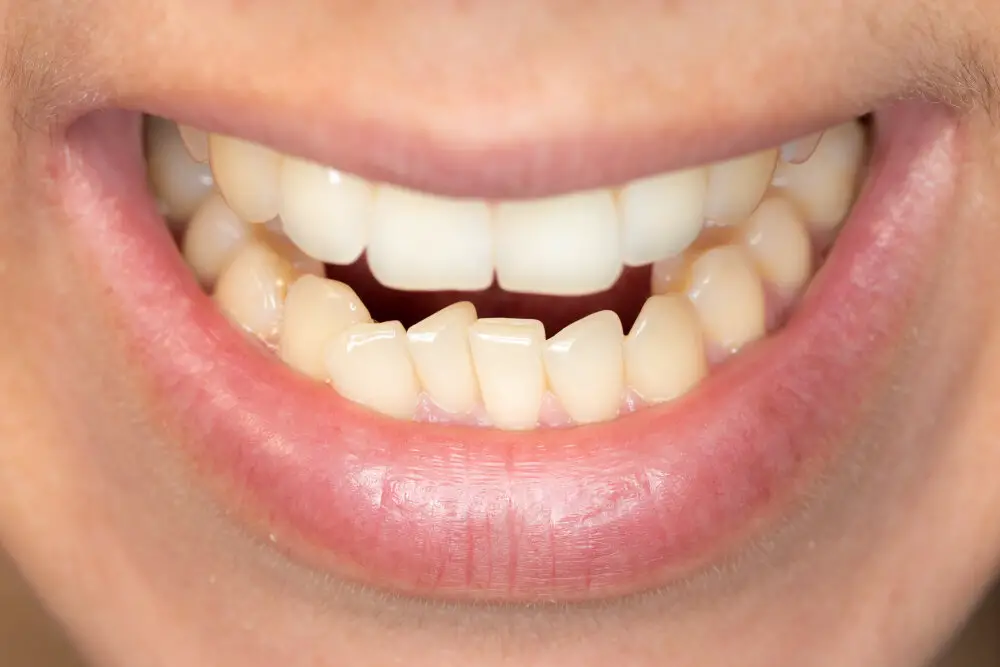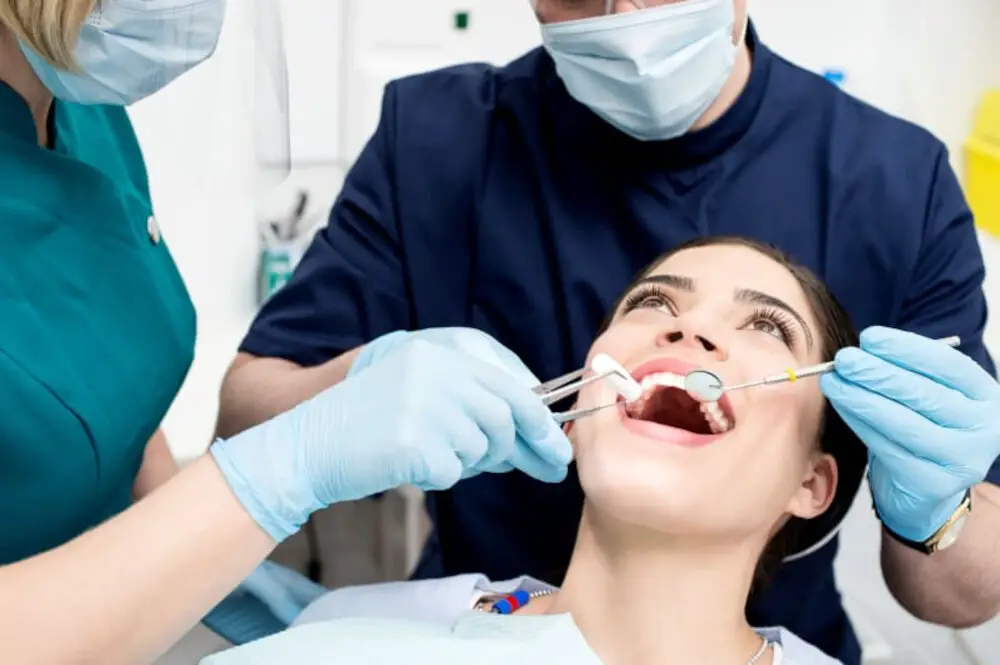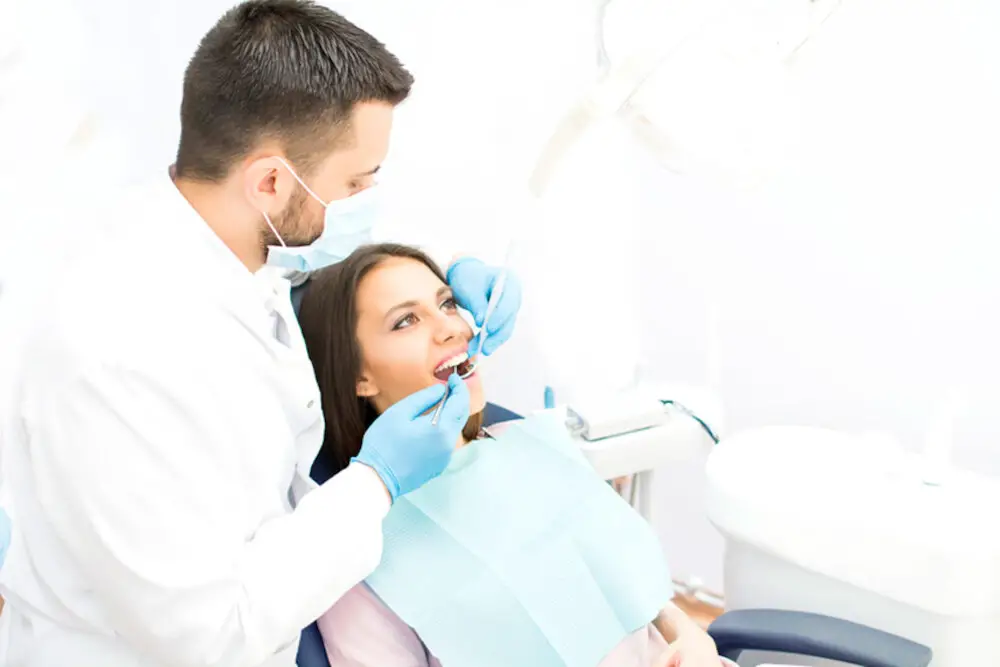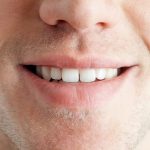Counting Bunny Teeth: How Many Teeth Do Bunnies Have?

Bunnies are adorable creatures that have gained immense popularity as pets worldwide. These furry animals are known for their cute and innocent appearance, which makes them an ideal choice for many animal lovers. However, have you ever wondered how many teeth bunnies have? Well, counting bunny teeth can be quite an interesting task, and the answer may surprise you! Bunnies are herbivorous animals, which means that their diet primarily consists of plant-based foods. To help them break down the tough and fibrous plant material, bunnies have several teeth that are specially designed for this purpose. These teeth play a vital role in the bunny’s digestive system, allowing them to extract the necessary nutrients from their food. Counting bunny teeth can give us a fascinating insight into the bunny’s anatomy and their unique adaptations for survival in the wild. So, let’s dive into the world of bunny teeth and discover how many teeth these adorable creatures have!
Counting bunny teeth is a crucial aspect of understanding the dental health of rabbits, which can have a significant impact on their overall well-being. Rabbits have a unique dental structure that requires a specific diet and consistent dental care to prevent dental problems such as overgrown teeth, malocclusion, and abscesses. Counting bunny teeth can help identify any potential dental issues early on, allowing for prompt intervention and treatment that can save the rabbit from pain, discomfort, and even death. Therefore, understanding how many teeth bunnies have and the importance of counting them is vital for any rabbit owner or animal lover who wants to ensure the health and happiness of these adorable creatures.
Bunny dental anatomy is unique and plays a crucial role in their well-being. Rabbits are herbivores, and their teeth have evolved to accommodate their diet. They have a total of 28 teeth, with four incisors in the front, two on the top and two on the bottom. These teeth are used for cutting and slicing fibrous vegetation. Behind the incisors, rabbits have a gap called the diastema, which allows them to move food around their mouth. The molars and premolars in the back of their mouth grind the food into smaller pieces. Bunny teeth continuously grow throughout their life, and they need to constantly chew on tough plant material to keep their teeth healthy and wear them down. A healthy bunny’s teeth are vital for their survival, and their dental anatomy has adapted to meet their dietary needs.
Bunny Dental Anatomy

Bunny dental anatomy plays a crucial role in the overall health and well-being of these adorable creatures. Bunnies have a set of 28 teeth, which includes incisors, premolars, and molars. The four incisors are the most prominent teeth in a bunny’s mouth. These teeth never stop growing, and they are used to bite and cut food. The premolars and molars are located further back in the mouth and are used to grind and chew food. Bunny teeth are not only essential for eating, but they also help maintain the shape of the face and promote good digestion. It’s important to note that bunny dental health is critical for their overall health. Due to the constant growth of their teeth, bunnies require a diet rich in fiber to keep their teeth healthy and prevent overgrowth. Without proper care, bunny teeth can become overgrown, leading to dental problems such as malocclusion, tooth decay, and abscesses. Regular veterinary check-ups and a balanced diet can help ensure that a bunny’s dental health is maintained, allowing them to live a happy and healthy life.
Bunny teeth, also known as lagomorph teeth, are categorized into four types based on their shape and function. The incisors, located in the front of the mouth, are the most recognizable and prominent teeth of a bunny. These teeth are long and chisel-shaped, allowing them to effectively gnaw and cut through tough vegetation. The canines, located next to the incisors, are smaller and cone-shaped, and are used for defense and self-protection. The premolars, located further back in the mouth, are wider and flatter, and help bunnies grind and crush their food. Finally, the molars, located in the back of the mouth, are even wider and have multiple cusps that help bunnies break down and thoroughly chew their food before swallowing.
Front teeth, also known as incisors, are typically narrow and sharp, designed for cutting and nibbling food. These teeth are located in the front of the mouth and are used to grip and tear food apart. In contrast, back teeth, also known as molars, are typically larger and flatter, designed for grinding and crushing food. These teeth are located towards the back of the mouth and are used to break down tougher foods, such as vegetation. While both types of teeth are important for a bunny’s diet, front teeth are more visible and often the focus of dental health concerns, as they are more prone to overgrowth and other issues.
The teeth of a bunny play a vital role in their diet. Bunnies are herbivores, which means they eat only plant-based food. Their teeth are designed to help them chew tough and fibrous plant materials such as hay and grass. Bunnies have two sets of teeth; the incisors, which are the front four teeth, and the molars, which are located at the back of the mouth. The incisors are used for biting and cutting, while the molars are responsible for grinding and chewing. Their constantly growing teeth require a diet rich in fiber to prevent dental problems such as overgrown teeth. The teeth of a bunny are a crucial part of their diet that enables them to efficiently consume the food they need to survive.
Counting Bunny Teeth

Bunnies are adorable and fascinating animals that have been domesticated for thousands of years. They are known for their cute, fluffy appearance and their long ears, but have you ever wondered how many teeth do bunnies have? Well, the answer is quite surprising, as these furry creatures have an impressive set of teeth that help them to survive in the wild. In total, bunnies have 28 teeth, which includes 6 incisors and 22 molars. The incisors are the front teeth that bunnies use to bite and cut their food, while the molars are at the back of the mouth and are used for grinding and chewing. Interestingly, bunnies’ teeth never stop growing throughout their lives, which means they need to chew and gnaw on things regularly to keep them from getting too long. This is why bunnies are often seen chewing on hay, grass, or even wooden toys. Additionally, bunnies’ teeth are also an important indicator of their health, as dental problems can cause serious health issues, so it is essential to keep an eye on their teeth and ensure they are healthy and strong.
There are various methods for counting bunny teeth depending on the purpose of the count. For instance, to determine the age of a bunny, the incisor teeth are counted. Bunnies have four incisor teeth in the upper jaw and two in the lower jaw. In contrast, to identify the species, molars and premolars are counted as well. Bunnies have a total of 28 teeth, including six incisors, two canine teeth, and 20 molars and premolars. Counting bunny teeth requires careful observation and handling of the bunny to avoid injury and ensure accuracy. Veterinarians and experienced bunny owners are the best people to count bunny teeth and provide accurate information about bunny dental health and care.
Counting bunny teeth can be a tricky task as there are several factors that can affect the accuracy of the count. Firstly, the age of the bunny can influence the number of teeth. For example, baby bunnies have fewer teeth than adult bunnies, and some teeth may not have fully emerged yet. Secondly, the breed of the bunny can also play a role. Different breeds of bunnies may have different numbers of teeth or slight variations in the arrangement of teeth. Finally, the position and alignment of the teeth can make it difficult to count accurately. Teeth can be hidden behind others or overlap, making it challenging to distinguish between them. Therefore, it’s essential to take these factors into account when attempting to count bunny teeth accurately.
Interpreting the results of a bunny tooth count can provide valuable insights into the health and well-being of these adorable creatures. Typically, adult rabbits have 28 teeth, with six incisors, two canines, and 20 molars. A tooth count can indicate if any teeth are missing or if there are any abnormalities in the shape or alignment of the teeth. A bunny with a healthy set of teeth is likely consuming a well-balanced diet and is less susceptible to digestive issues. However, a bunny with dental problems may experience difficulty eating, leading to weight loss and other health complications. Therefore, regular bunny tooth counts are essential to identify any potential issues and take preventative measures to ensure their overall well-being.
Common Bunny Dental Issues

When it comes to bunny dental health, there are a few common issues that pet owners should be aware of. One of the most common problems is overgrown teeth. Rabbits’ teeth grow continuously throughout their lives, and if they don’t wear them down by chewing on tough foods, they can become too long. This can cause problems with eating and can even lead to abscesses or other infections. Regular dental check-ups with a veterinarian can help catch overgrown teeth early and prevent further complications. Another common dental issue in rabbits is malocclusion, which is when the top and bottom teeth don’t line up properly. This can cause uneven wear on the teeth and can lead to painful sores or infections in the mouth. In severe cases, it may require the intervention of a veterinarian to correct the problem and ensure the bunny’s ongoing dental health. To prevent dental issues in bunnies, it’s important to provide them with a healthy diet that includes plenty of hay, which can help wear down their teeth naturally. Avoid feeding them too many sugary or starchy treats, which can contribute to dental problems. Regularly inspecting your bunny’s teeth and gums can also help you catch any issues early, before they become more serious. Finally, it’s important to ensure that your bunny has plenty of opportunities to chew and gnaw, which can help keep their teeth healthy and strong. With proper care and attention, your bunny can enjoy good dental health and a happy, healthy life.
Bunny teeth are a crucial part of their health and wellbeing, but they can also be a source of problems. Common dental problems that affect bunnies include overgrown teeth, malocclusion, and abscesses. Overgrown teeth occur when the bunny’s teeth grow too long and become misaligned, which can make it difficult for them to eat and cause pain. Malocclusion is a condition where the bunny’s teeth don’t align properly, which can lead to uneven wear and tear and painful sores in their mouth. Abscesses are pockets of pus that can form around the teeth and gums, which can be painful and lead to infection if left untreated. It’s crucial to monitor your bunny’s dental health and seek veterinary care if you notice any signs of dental problems to ensure they stay happy and healthy.
To prevent dental issues in bunnies, it is crucial to provide them with a proper diet that is high in fiber. This helps wear down their constantly growing teeth and prevents them from becoming overgrown, which can lead to painful dental problems. Hay should make up the majority of their diet, along with fresh greens and vegetables. Avoid sugary treats and limit the amount of fruits given to them. Regularly checking their teeth and providing them with chew toys can also help maintain their dental health. If you notice any signs of dental issues such as drooling, reduced appetite, or difficulty eating, seek veterinary care immediately to prevent further complications.
Dental problems in bunnies can cause pain and discomfort, affecting their ability to eat and leading to other health issues. Treatment options depend on the severity of the problem, and may include teeth trimming or filing, antibiotics, pain medication, and changes to the bunny’s diet. In some cases, surgery may be necessary. It’s important to seek veterinary care if you suspect your bunny is experiencing dental problems, as early treatment can prevent more serious issues from developing. Regular dental check-ups and proper diet can also help prevent dental problems in bunnies.
Counting Bunny Teeth: How Many Teeth Do Bunnies Have is an informative article that sheds light on the dental anatomy of bunnies. The article explains that bunnies have a total of 28 teeth in their mouths, which includes incisors, premolars, and molars. It also highlights the importance of bunny teeth in their daily lives, particularly for their diet and overall health. The article emphasizes that bunny teeth are continuously growing, and if not taken care of, they can cause dental problems and other health issues. The article concludes by encouraging bunny owners to provide their furry friends with a proper diet and dental care to ensure their teeth stay healthy and strong.
Monitoring bunny dental health is essential for their overall well-being and quality of life. As herbivores, rabbits rely on their teeth to grind and break down tough, fibrous foods. Dental problems can quickly become painful and impact their ability to eat, leading to malnutrition and other health issues. Regularly checking their teeth and gums for signs of abnormalities, such as overgrowth, malocclusion, or abscesses, can help prevent serious dental problems and ensure they receive prompt veterinary care if necessary. Additionally, providing a healthy, high-fiber diet and plenty of opportunities to chew on safe toys and hay can help maintain their dental health and prevent boredom and destructive behavior.
In conclusion, bunny teeth counting is an essential aspect of understanding the anatomy and behavior of these adorable creatures. With their unique dental structure, counting their teeth can provide valuable information about their diet, health, and overall well-being. It is crucial to note that rabbits’ teeth continuously grow, and they must maintain them by chewing on hard objects or hay to prevent overgrowth and dental problems. Therefore, regularly checking their teeth can help detect any abnormalities or issues and seek veterinary attention promptly. Overall, bunny teeth counting is a fascinating and informative process that can deepen our appreciation for these charming animals.
Conclusion

In conclusion, counting bunny teeth may seem like a trivial task, but it is essential for understanding the health and behavior of these adorable animals. With an average of 28 teeth, bunnies use their teeth for more than just chewing food. Their teeth also play a crucial role in their communication and social hierarchy. Proper dental care, such as regular check-ups and a balanced diet, is essential for maintaining the health and wellbeing of bunnies. So, the next time you see a bunny, take a moment to appreciate their amazing teeth and the important role they play in their lives.






